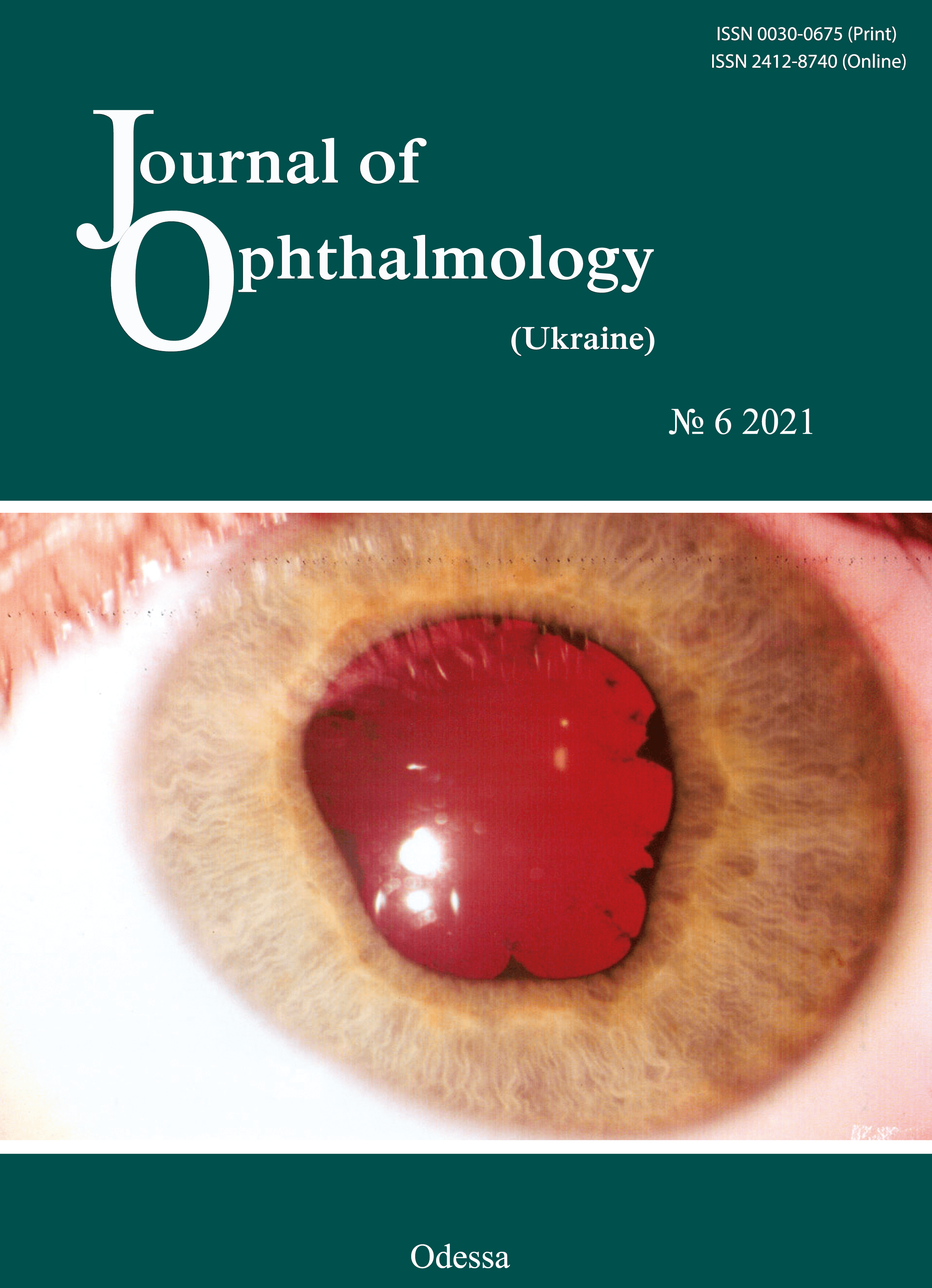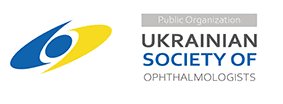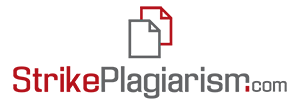Expression of lymphocyte activation markers CD 54 (ICAM-1), CD 5, CD 95 (FAS) and neutrophil activation marker CD15 in the peripheral blood of patients with intermediate uveitis and healthy individuals
DOI:
https://doi.org/10.31288/oftalmolzh202161620Keywords:
intermediate uveitis, lymphocyte activation markers, СD54 (ICAM-1), СD5, СD95 (FAS), СD15Abstract
Background: Immunological abnormalities are implicated in the pathogenesis of inflammatory diseases of the uveal tract. Investigation of the molecular mechanisms of various forms of endogenous uveitis from the standpoint of current immunology seems to be relevant from the theoretical and practical standpoints. This will provide a direction for further research on the development of pathogenetically grounded methods of treatment of uveitis.
Purpose: to assess the expression levels of lymphocyte activation markers, intercellular adhesion marker (ICAM)-1 CD54, СD95 (FAS), and СD5, and neutrophil activation marker CD15, in the peripheral blood of patients with intermediate uveitis and healthy individuals.
Material and Methods: Blood samples were taken from 14 patients (mean age, 34.0 ± 11.0 years) with intermediate uveitis before treatment and 26 practically healthy individuals (mean age, 36.0 ± 10.0 years). An immunohistocytochemical study using monoclonal antibodies was employed to assess the expression.
Results: Expression of cell surface molecular markers on peripheral blood lymphocytes was significantly higher in patients with intermediate uveitis compared with controls. Mean percentage and absolute values of СD54 (ICAM-1) expression were 29.6 ± 3.5% and 674.18 ± 63.4 cell/µL, respectively, for patients, versus 14.2 ± 3.1% and 674.18 ± 63.4 cell/µL, respectively, for controls; CD95 (FAS), 28.5 ± 4.9% and 534.2 ± 59.5 cell/µL, for patients, versus 18.9 ± 3.1% and 254.18 ± 42.1 cell/µL, respectively, for controls; CD5, 23.4 ± 4.1% and 622.8 ± 53.5 cell/µL, respectively, for patients, versus 10.3 ± 1.96% and 152.11 ± 10.13 cell/µL, respectively, for controls. CD15, a neutrophil activation marker, was significantly (Mann-Whitney test, p < 0.05) higher expressed in patients (mean percentage expression, 28.7 ± 5.8%; mean absolute expression, 980.19 ± 58.4 cell/µL), than in controls (mean percentage expression, 14.2 ± 3.1%; mean absolute expression, 165.5 ± 32.1 cell/µL). Increased expression of lymphocyte activation markers may indicate a failure of autotolerance mechanisms as well as excessive immune response leading to intraocular inflammation. In addition, increased expression of СD 54 (ICAM-1) and СD 95 (FAS) may be a prognostic sign for increased inflammation in the eye.
Conclusion: Immunological status of patients with intermediate uveitis is characterized by significantly increased expression of molecular markers such as intercellular adhesion marker (ICAM)-1 CD54, apoptosis marker СD95 (FAS), lymphocyte autoactivation marker СD5, and neutrophil activation marker CD15. Further research of longitudinal changes in these characteristics may be important for predicting the course of inflammation over time and determining the therapy needed.
References
1.Khramenko NI, Konovalova NV. Findings of ocular and brain hemodynamics in patients with anterior uveitis complicated by macular edema. J Ophthalmol (Ukraine). 2020;4:14-22. Russian. https://doi.org/10.31288/oftalmolzh202041322
2.Kamilov KhM, Fayzieva DB. [On the specific and nonspecific immune responsiveness in patients with endogenous uveitis]. Ophthalmology in Russia. 2013;10(4):45-48. Russian.
3.Forrester JV, Kuffova L, Dick AD. Autoimmunity, autoinflammation, and infection in uveitis. Am J Ophthalmol. 2018 May;189:77-85. https://doi.org/10.1016/j.ajo.2018.02.019
4.Khramenko NI, Usov VY, Konovalova NV, Velychko LM, Bogdanova OV. Peculiarities of expression of the ICAM-1 intercellular adhesion molecule marker and CD-95 apoptosis marker in patients with uncomplicated anterior uveitis and complicated macular edema. DOG 2020. Poster 387. p. 163-4. https://doi.org/10.1007/s00347-020-01197-0
5.Gluzman DF, Skliarenko LM, Nadgornaia VA, Kriachok IA. [Immunocytochemistry in tumor diagnosis]. Kyiv: Morion; 2003. Russian.
6.Sidorenko SP. [Human cell surface antigens systematized by international workshops on human leucocyte differentiation antigens]. Imunologiia i alergologiia. 1998;3:16-38. Russian.
7.R osenbaum JT, Kim HW. Innate immune signals in autoimmune and autoinflammatory uveitis. Int Rev Immunol. 2013 Feb;32(1):68-75.https://doi.org/10.3109/08830185.2012.750132
8.Iuldasheva SA, Karim-Zade KhD, Satorov S. [Current view on the etiology, pathogenesis and prevalence of uveitis]. Vestnik Avitsenny. 2015;1:141-6. Russian.
9.Zemskov AM, Zemskov VM, Karaulov AV. [Clinical Immunology]. Moscow: GEOTAR-Media, 2008. Russian.
10.Filchenkov AA, Stepanov IuM, Lipkin VM. [Involvement of FAS/FASL system in homeostasis regulation and immune system cell function]. Alergologiia i imunologiia. 2002;3(1):24-35. Russian.
11.Velychko LN. [Expression of molecular markers of lymphocyte activation in peripheral blood of patients with uveal melanoma with various efficacy of organ-preserving treatment]. Oftalmol Zh. 2013;5:9-13. Russian. https://doi.org/10.31288/oftalmolzh20135913
12.Poliakova SI, Velychko LN, Bogdanova AV, at al. [Comparison of expression of molecular markers of lymphocyte activation in peripheral blood of patients with small T1 choroidal melanoma and healthy controls]. Oftalmol Zh. 2017;1:25-8. Russian. https://doi.org/10.31288/oftalmolzh201712528
13.Guliamova, Rizopulu AP, Kamilov HM, et al. [Immunological characterization of patients with chronic uveitis caused by herpetic vruses and/or cytomegalovirus]. Meditsinskaia immunologiia. 2005;7(5-6):543-50. Russian.
Downloads
Published
How to Cite
Issue
Section
License
Copyright (c) 2025 Л. Н. Величко, А. В. Зборовская, Н. Б. Курыльцив, А. В. Богданова

This work is licensed under a Creative Commons Attribution 4.0 International License.
This work is licensed under a Creative Commons Attribution 4.0 International (CC BY 4.0) that allows users to read, download, copy, distribute, print, search, or link to the full texts of the articles, or use them for any other lawful purpose, without asking prior permission from the publisher or the author as long as they cite the source.
COPYRIGHT NOTICE
Authors who publish in this journal agree to the following terms:
- Authors hold copyright immediately after publication of their works and retain publishing rights without any restrictions.
- The copyright commencement date complies the publication date of the issue, where the article is included in.
DEPOSIT POLICY
- Authors are permitted and encouraged to post their work online (e.g., in institutional repositories or on their website) during the editorial process, as it can lead to productive exchanges, as well as earlier and greater citation of published work.
- Authors are able to enter into separate, additional contractual arrangements for the non-exclusive distribution of the journal's published version of the work with an acknowledgement of its initial publication in this journal.
- Post-print (post-refereeing manuscript version) and publisher's PDF-version self-archiving is allowed.
- Archiving the pre-print (pre-refereeing manuscript version) not allowed.












